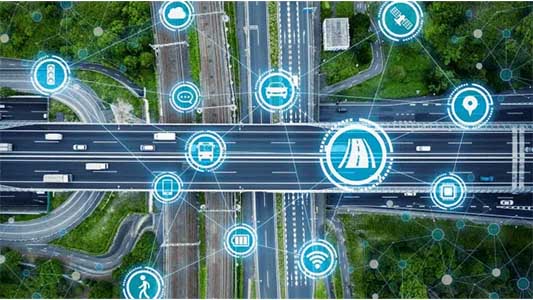The intelligent traffic management system (ITMS) market is on an accelerated growth trajectory, expected to expand from USD 15.16 billion in 2025 to USD 54.37 billion by 2034, registering a CAGR of 15.25% during the forecast period. With the rising demand for smart city infrastructure, increasing urbanization, and the integration of advanced technologies such as AI, IoT, cloud computing, and connected vehicles, ITMS is emerging as a critical enabler of efficient mobility solutions.
Introduction to Intelligent Traffic Management Systems
Intelligent traffic management systems represent a technological evolution in modern urban planning. These systems are designed to alleviate traffic congestion, improve commuter safety, reduce environmental impact, and enhance overall urban mobility. The ITMS ecosystem encompasses:
- Advanced Traffic Management Systems (ATMS)
- Adaptive Signal Control & Traffic Signal Systems
- Traffic Monitoring & Detection Systems
- Electronic Toll Collection and Congestion Pricing
- Corridor & Freeway Management Systems
- Advanced Traveler Information Systems (ATIS)
- Traffic Enforcement Systems
- Public Transport Priority Solutions
These solutions leverage software, hardware, and cloud-based services, enabling cities to optimize traffic flow through real-time analytics and predictive modeling.
Market Highlights
- North America currently leads the ITMS market with the highest revenue share.
- Asia Pacific is expected to record the fastest CAGR, fueled by rapid smart city development projects in China, India, and Southeast Asia.
- Software solutions dominate the component segment, while communications and cloud connectivity will grow at the fastest rate.
- On-premises/city-hosted deployments hold a strong share today, but cloud-hosted and hybrid platforms are expected to gain traction due to their scalability.
- AI-driven predictive control and prescriptive optimization are projected to outperform traditional rule-based systems.
- Urban/municipal traffic management applications lead, while curbside management and multimodal integration are rising rapidly with increasing demand for e-mobility and shared transport.
Key Growth Drivers of ITMS Market
1. Rising Urbanization and Vehicle Ownership
The exponential increase in vehicle ownership, coupled with rapid urbanization, has heightened the need for smart, adaptive traffic solutions. Congested cities such as New Delhi, Los Angeles, and Beijing are investing in ITMS to reduce travel time and curb emissions.
2. Government Initiatives and Funding
Governments across the globe are prioritizing smart mobility projects. For example:
- India launched its AI-powered traffic management system in June 2025 to enhance safety and congestion control.
- Singapore’s Land Transport Authority has implemented real-time traffic surveillance and smart signaling systems.
- The U.S. Department of Transportation continues to invest heavily in connected vehicle initiatives and adaptive traffic signal control systems.
3. Integration of AI and IoT
Artificial intelligence enables predictive traffic modeling, while IoT devices such as connected sensors and cameras provide real-time data. Together, they help optimize routes, reduce bottlenecks, and improve traffic law enforcement efficiency.
4. Advancements in Sensor Technologies
The deployment of inductive loop detectors, LiDAR, radar sensors, and V2X communication technologies ensures better accuracy in vehicle detection. Econolite’s EPIQ RADAR sensor (launched in August 2025) is a prime example of innovation driving market growth.
5. Public-Private Partnerships (PPPs)
Collaborations between governments and private enterprises are reshaping urban mobility. For example, High Lander Aviation partnered with Konza Technopolis (Kenya) in July 2025 to launch a drone-based traffic management system.
Segmentation Analysis of the ITMS Market
By Solution/System Type
- Advanced Traffic Management Systems (ATMS) dominate the market.
- Adaptive signal control and corridor management systems are projected to witness the fastest growth.
By Component
- Software solutions lead due to their integration with AI, analytics, and cloud platforms.
- Communications and edge connectivity solutions are set to grow at the highest CAGR, driven by 5G deployment.
By Deployment Model
- On-premises systems remain popular in developed cities with robust infrastructure.
- Cloud-hosted and hybrid ITMS platforms will gain ground due to cost efficiency and easy scalability.
By Analytics & AI Capability
- Rule-based adaptive control dominates the segment.
- AI-driven predictive analytics is expected to disrupt the industry by offering more efficient congestion management.
By Application
- Urban/municipal traffic management remains the largest segment.
- Curbside management and multimodal integration (e.g., first/last-mile connectivity) is emerging as a crucial growth area with the rise of shared mobility and EV adoption.
By Sensor/Detection Technology
- Inductive loop detectors still account for the largest share.
- Connected vehicle (V2X) and multi-sensor fusion technologies are expected to grow rapidly, enabling autonomous traffic management systems.
By Business Model
- CapEx with long-term service contracts is the dominant revenue model.
- Traffic Management-as-a-Service (TMaaS) is expanding as cities adopt subscription-based ITMS solutions.
By End-User
- Municipal and city traffic agencies dominate the market.
- Airports, seaports, and large campuses are adopting ITMS at a fast pace to manage complex traffic networks.
Regional Insights
North America
The U.S. and Canada are leading in smart mobility adoption, fueled by heavy investments in connected vehicle technologies and ITS deployments.
Europe
Countries like Germany, the U.K., and France are integrating ITMS solutions with sustainable mobility initiatives and low-emission zones.
Asia Pacific
This region will register the highest CAGR due to rapid urbanization, mega-city development projects, and government-funded smart city missions in China, India, and Japan.
Middle East & Africa
Smart city projects such as Saudi Arabia’s NEOM and UAE’s Dubai Smart City Vision are creating lucrative opportunities for ITMS providers.
Future Outlook of Intelligent Traffic Management Systems
The future of ITMS is data-driven, AI-powered, and sustainability-focused. Key trends shaping the next decade include:
- Autonomous Vehicle Integration: Traffic systems will evolve to support driverless cars with V2X communication.
- Green Mobility Goals: ITMS will play a pivotal role in reducing carbon emissions by optimizing traffic flow.
- Drone-Based Traffic Monitoring: UAVs will be increasingly deployed for aerial traffic surveillance and management.
- Mobility-as-a-Service (MaaS): ITMS will integrate with ride-sharing, e-mobility, and public transport platforms to ensure seamless journeys.
- Edge Computing in Traffic Analytics: Real-time, localized decision-making will enhance efficiency and reduce latency.
Conclusion
The intelligent traffic management system market is at the forefront of transforming urban mobility. With strong government backing, rapid technological innovation, and growing public-private partnerships, ITMS solutions are set to become a backbone of future transportation infrastructure. As cities continue to modernize, the integration of AI, IoT, cloud-based platforms, and advanced sensor technologies will define the future of traffic systems worldwide.
Source: https://www.towardsautomotive.com/insights/intelligent-traffic-management-system-market-sizing
About the Author: Ajit Bansod is a skilled and research-driven analyst at Towards Automotive, with over 3 years of experience specializing in the intersection of automotive innovation and intelligent communication technologies.












